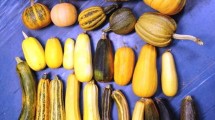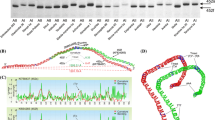Abstract.
Two genomic full-length alleles of a phosphoenolpyruvate carboxylase (PEPC; EC 4.1.1.31) were isolated and analysed in the gymnosperm Norway spruce [Picea abies (L.) Karst.]. Mendelian segregation analysis confirmed that the two alleles belong to the same DNA gene locus. Southern analysis was performed using exon and intron probes, separately. A small gene family was discovered when exon probes were used. The isolated gene locus was termed PEPC-1 and found to exhibit the largest PEPC genomic sequence characterised so far in the plant kingdom. This is due to comparatively long intron sequences, and to an additional intron in the 3′-untranslated region. Sequence homology of the two full-length PEPC-1 alleles is 99.8%. From exon variation, one single exchange of an amino acid was deduced. The introns harboured polymorphic regions that were analysed for variability among three different spruce individuals. Within-PEPC-1 genotyping revealed that all three individuals could be unambiguously distinguished from each other. The results are discussed with respect not only to exon/intron site evolution among alleles but also to particular genomic features of a gymnosperm PEPC in comparison to PEPC in angiosperms.
Similar content being viewed by others
Author information
Authors and Affiliations
Additional information
Electronic Publication
Rights and permissions
About this article
Cite this article
Ipsen, .A., Ziegenhagen, .B. New insights into allelic diversity of a phosphoenolpyruvate carboxylase in the conifer Picea abies (L.) Karst.. Planta 214, 265–273 (2001). https://doi.org/10.1007/s004250100614
Received:
Accepted:
Issue Date:
DOI: https://doi.org/10.1007/s004250100614




